INDIAN ARMED FORCES CHIEFS ON
OUR RELENTLESS AND FOCUSED PUBLISHING EFFORTS

SP Guide Publications puts forth a well compiled articulation of issues, pursuits and accomplishments of the Indian Army, over the years

I am confident that SP Guide Publications would continue to inform, inspire and influence.

My compliments to SP Guide Publications for informative and credible reportage on contemporary aerospace issues over the past six decades.
- Prime Minister witnesses 'Bharat Shakti' – a Tri-Services Firing and Manoeuvre Exercise in Pokhran, Rajasthan
- Interim Defence Budget 2024-25 — An Analysis
- Union Defence budget 2024
- Prime Minister Modi Commemorates Indian Navy Day in a Grand Ceremony
- Prime Minister Modi Flies in the LCA Tejas
- New Chapter in India-Italy Defence Ties
- Airpower beyond Boundaries
Textron offers Scorpion jet to IAF


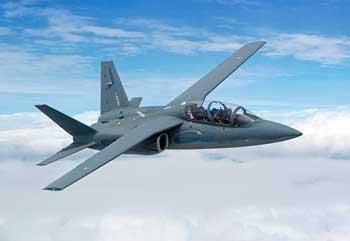
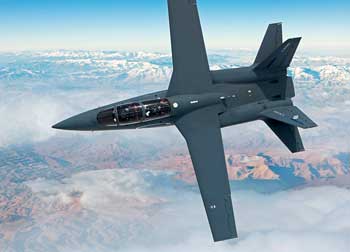
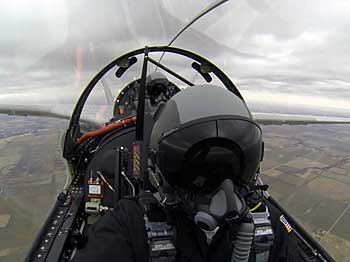
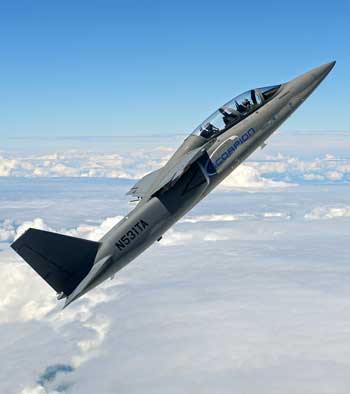
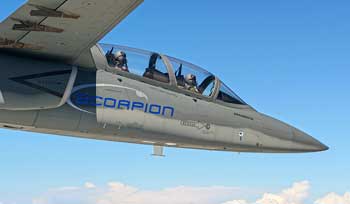
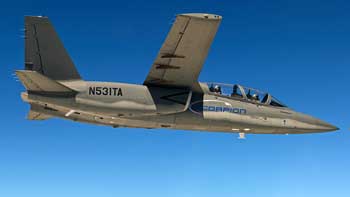
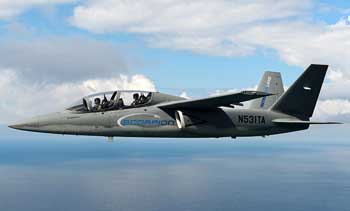
The Indian Air Force, which receives pitches both solicited and unsolicited, has received one of its most interesting in recent times. Faced with a training void in the intermediate jet trainer space, the IAF had resorted to a global request for information to gauge what solutions existed in the world aviation market for a light jet trainer platform that could also undertake light attack and tactical multipurpose missions. One of the responses the IAF has received is an aircraft that has evoked attention for its simplicity, cost and mission profile: the Textron Airland Scorpion, a light tactical twin-jet airplane fitted out for tactical interdiction missions and ISR. Whether or not the IAF is willing to look strictly at aircraft that don't fit its rather unbending trainer aircraft profile, the Scorpion is an intriguing platform that makes affordability its singular touchstone.
First off, the Scorpion isn't intended as a high performance airplane -- and isn't under development through a US Department of Defense-funded programme or requirement, but rather a venture by Textron and Airland LLC based on their own independent understanding of the world market for aircraft, and evolving requirements. Shrinking budgets, the unaffordability of high performance fighter jets, logistical economics and the spending power of small or emerging nations with security threat perspectives largely guide the development of a light, uncomplicated aircraft that can, in the words of the maker, engage in domestic interdiction, quick-reaction natural disaster support, air sovereignty patrols, and low-threat battlefield missions. In other words, the aircraft could be deployed in a counter-insurgency profile as well.
Simplicity and economy guide the development of the Textron Airland offering. At a stated operating cost of $3,000 per flight hour, the Scorpion proposes to be hugely cheaper to operate than high performance jets currently engaged in US operations around the world. And with a price tag of under $20 million per airframe, the makers will clearly be pitching the aircraft at substantial fleet number requirements. The twin-seat configuration makes it double as a possible fast jet trainer, far exceeding the performance requirements of the IAF's ideal IJT. Several other innovations keep the aircraft's cost low: no fly-by-wire, an all composite fuselage that draws from parts already built by Textron firm Cessna, and a cockpit only slightly different from existing cockpits on Cessna aircraft. The Scorion flies on two Honeywell TFE731 turbofans producing 3,600 kg of thrust that can keep the jet airborne for just over five hours, with an overall service life of 20,000 hours. According to Textron, the Scorpion, which flew for the first time in December 2013, is being developed with a 1,400 kg payload that could include bombs (guided and unguided), or electronic payloads for intelligence gathering, all in an internal bay.
Companies including Malaysia, the UAE, Indonesia and Nigeria have shown interest in the Scorpion, with discussions taking place with other countries in the Middle East and South East Asia as well. At a time when the Indian Air Force's requirements are evolving, and yet held in place by old-fashioned pulls and pressures, out-of-the-box aircraft that appear to challenge what in U.S. military jargon is called the death spiral -- costlier and costlier aircraft, with higher and higher capabilities, leading to smaller and smaller acquisition numbers and therefore fleets. Whether or not an airplane like the Scorpion fits anywhere in the IAF's inventory and capability wishlist is difficult to predict. For that, there would need to be greater operational synergies between training and other missions, a conflation of doctrine and the possibility of stepping out of the old rigidities that remain the guiding principles of every purchase.
The Scorpion isn't unique in its proposition. For years, trainers have been positioned as being able to double as light attack/counter-insurgency and intelligence gathering platforms, most recently the Embraer Super Tucano and the Yakovlev Yak-130. Such melding of mission profiles is a strong recognition of the imperatives of training, but the shrinking luxury of procuring and operating fleets of high performance aircraft for the spectrum of threats that many emerging nations face.





